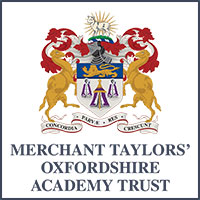Design & Technology at Brightwell
"We are Designers and Engineers"
Curriculum Intent
At Brightwell, we aim for every child to have an opportunity to develop skills, knowledge and understanding of designing and making functional products. We feel it is vital to nurture creativity and innovation through design, and by exploring the designed and made world in which we all live and work. We have chosen to use units of work from Kapow to form the core basis of our curriculum and it is our intent that this subject is taught in all year groups through three topics per year. These units are a well-planned series of lessons which ensure progressive coverage of the knowledge, understanding and skills required by the National Curriculum.
Through these lessons, we aim to inspire our children by offering a broad range of practical experiences to create innovative designs which solve real and relevant problems within a variety of different contexts. The iterative design process is fundamental and runs throughout the units; this process encourages children to identify real and relevant problems, critically evaluate existing products and then take risks and innovate when designing and creating solutions to the problems. As part of the iterative process, time is built in to reflect, evaluate and improve on prototypes using design criteria. Opportunities are provided for children to evaluate key events and individuals who have helped shape the world, showing the real impact of design and technology on the wider environment and helping to inspire children to become the next generation of innovators.
Curriculum Implementation
The teaching and implementation of the Design and Technology Curriculum at Brightwell cum Sotwell Primary School is based on the National Curriculum, following Kapow scheme of work and, where appropriate, is linked to topics to ensure a well-structured approach to this creative subject. Children have access to key knowledge, language and meanings in order to understand and readily apply to their work in DT and across the wider curriculum.
As a school, we are dedicated to the teaching and delivery of a high quality Design Technology curriculum and, as such, design and technology skills and understanding are built into the lessons, following an interactive process, allowing for the revision of ideas to become part of good practice and ultimately helping to build a depth to children's understanding. Through revisiting and consolidating skills, these lessons aim to help children build on prior knowledge alongside introducing new skills, knowledge and challenge. The revision and introduction of key vocabulary is also carefully built into each lesson to ensure that children are allowed opportunities to repeat and revise this knowledge.
We have followed the suggested organisation of the lessons within each key stage but, where necessary, have chosen to use well planned, quality lessons of our own choice to supplement the overall curriculum content. However, Design Technology is very cross – curricular and so also draws upon a large amount of subject knowledge and skills from within Mathematics, Science, History, Computing and Art. Through these lessons, we hope to inspire pupils to develop a love of Design and Technology and see how it has helped shaped the ever-evolving technological world they live in. Pupils explore and use a variety of media and materials through a combination of child initiated and adult directed activities.
Curriculum Impact
Through the quality teaching taking place, and through the on-gong assessment opportunities throughout individual DT topics, we will see the impact of the subject in different ways. Not only will our children will have clear enjoyment and confidence in all areas of Design Technology, they will develop the creative, technical and practical expertise needed to perform everyday tasks confidently and to participate successfully in an increasingly technological world. They will learn to take risks, become resourceful, innovative and enterprising individuals and be critical thinkers who can look at existing designs to analyse and assess their effectiveness before considering ways of redesigning and reconstructing it to improve its overall success. Learning is assessed through the analysis of the pupil’s ability to evaluate, design, make and improve their own work.
Please see our curriculum overviews on the class pages for further details of what the children are learning.

























